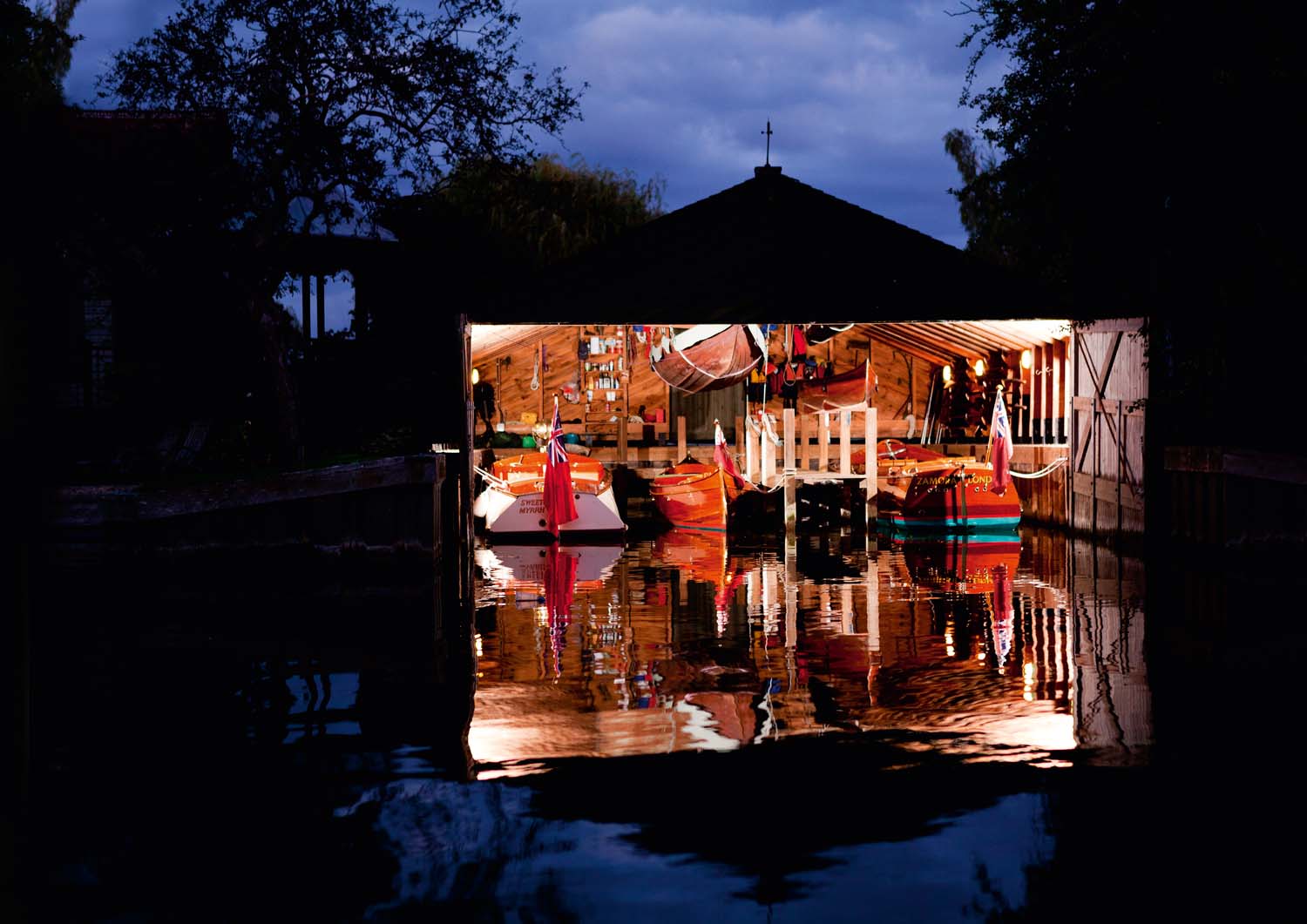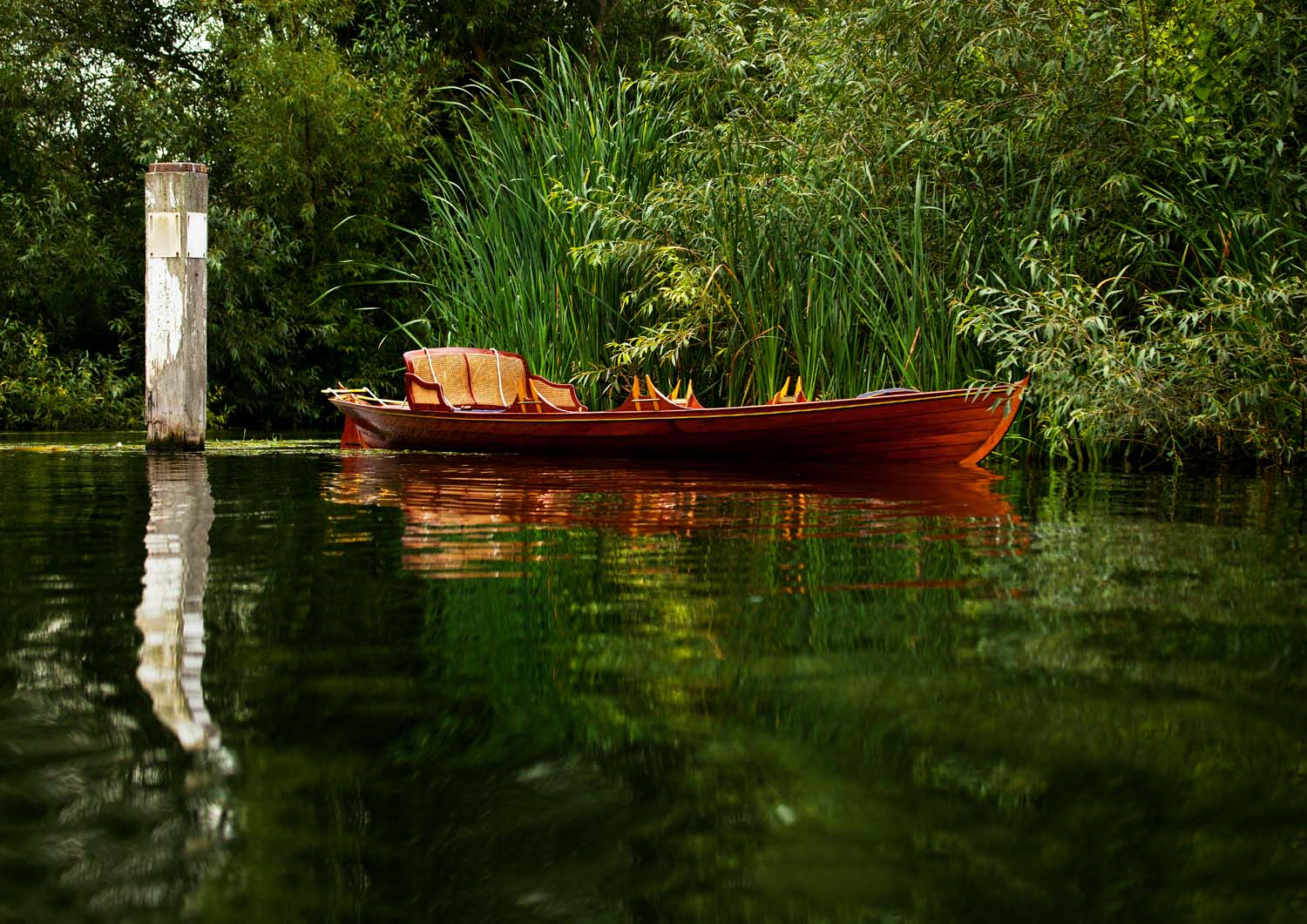
The Thames skiff is to the River Thames as the Gondola is to Venice. The evolution of clinker hull construction is well documented from the Vikings onwards, reaching a peak of refinement in the hands of Thames boatbuilders and encouraged by the Victorian fashion of enjoying the great outdoors. This skiff belongs to Lucie Henwood and is named “Gillian” in memory of her late sister.
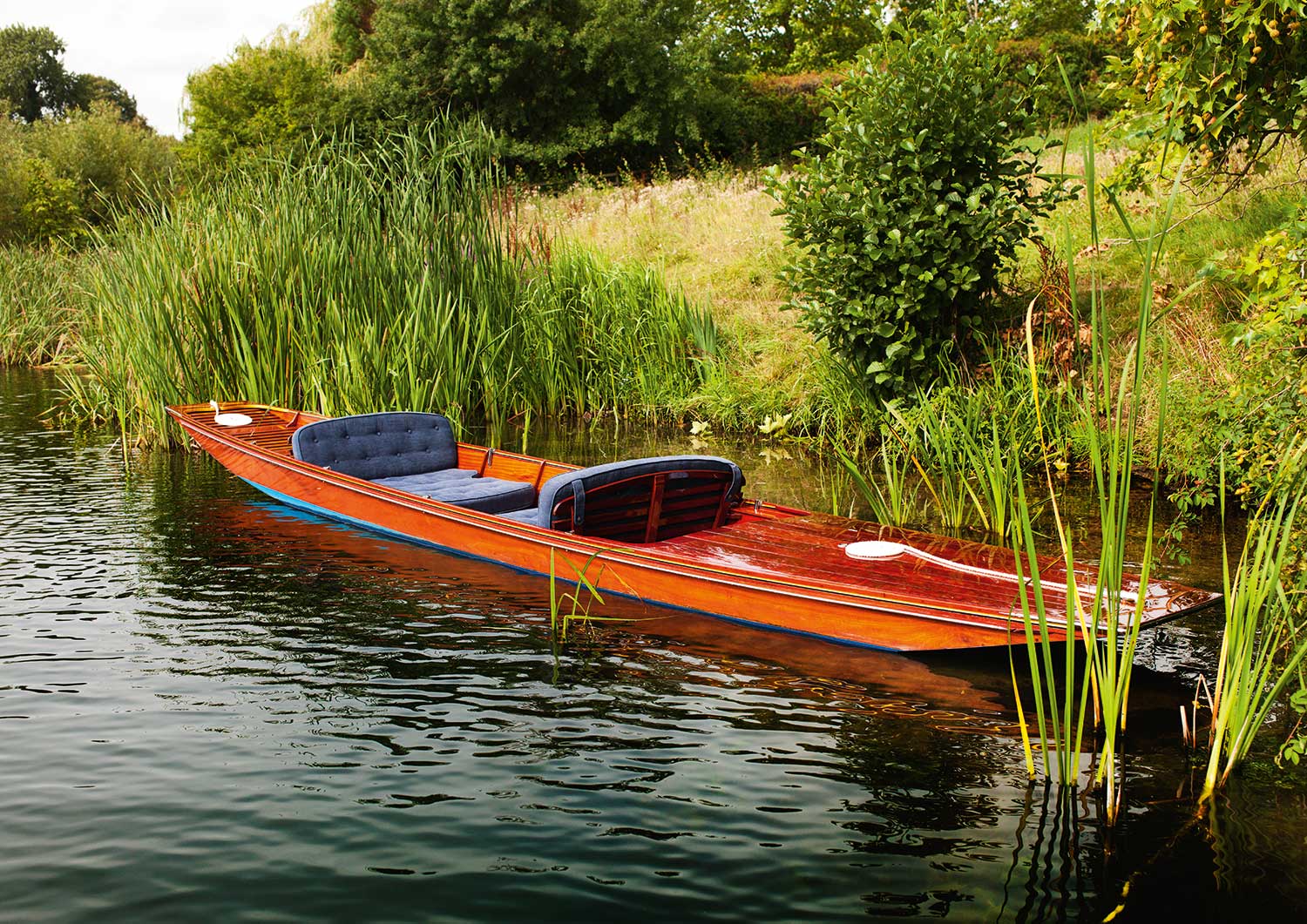
In 1988 the electric boat revival was in its infancy on the Thames and for a newcomer to this form of propulsion the silence was a revelation. The idea behind “Voltaire” was to build a luxurious Thames punt that we could use to introduce customers to the beauty of electric power.
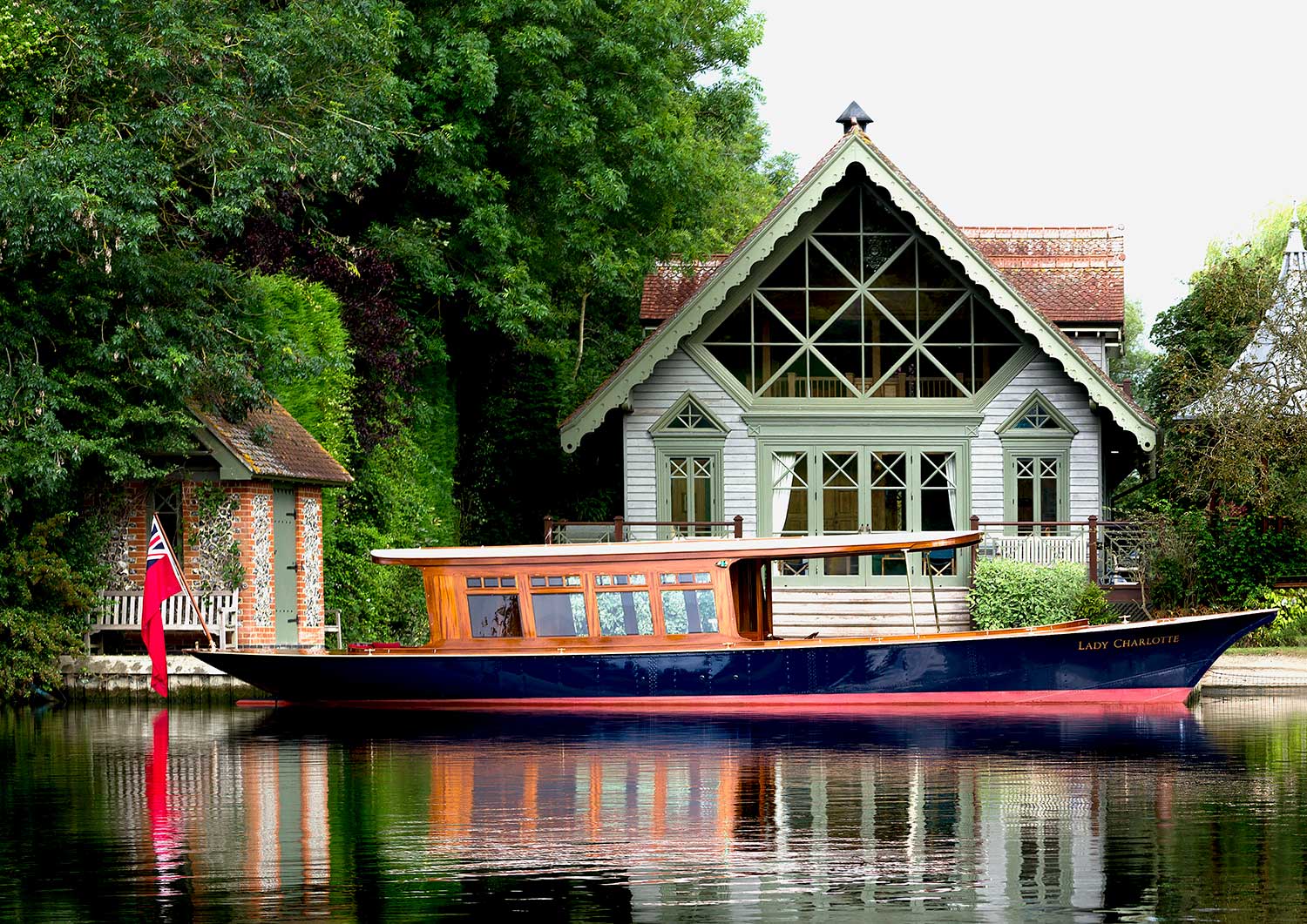
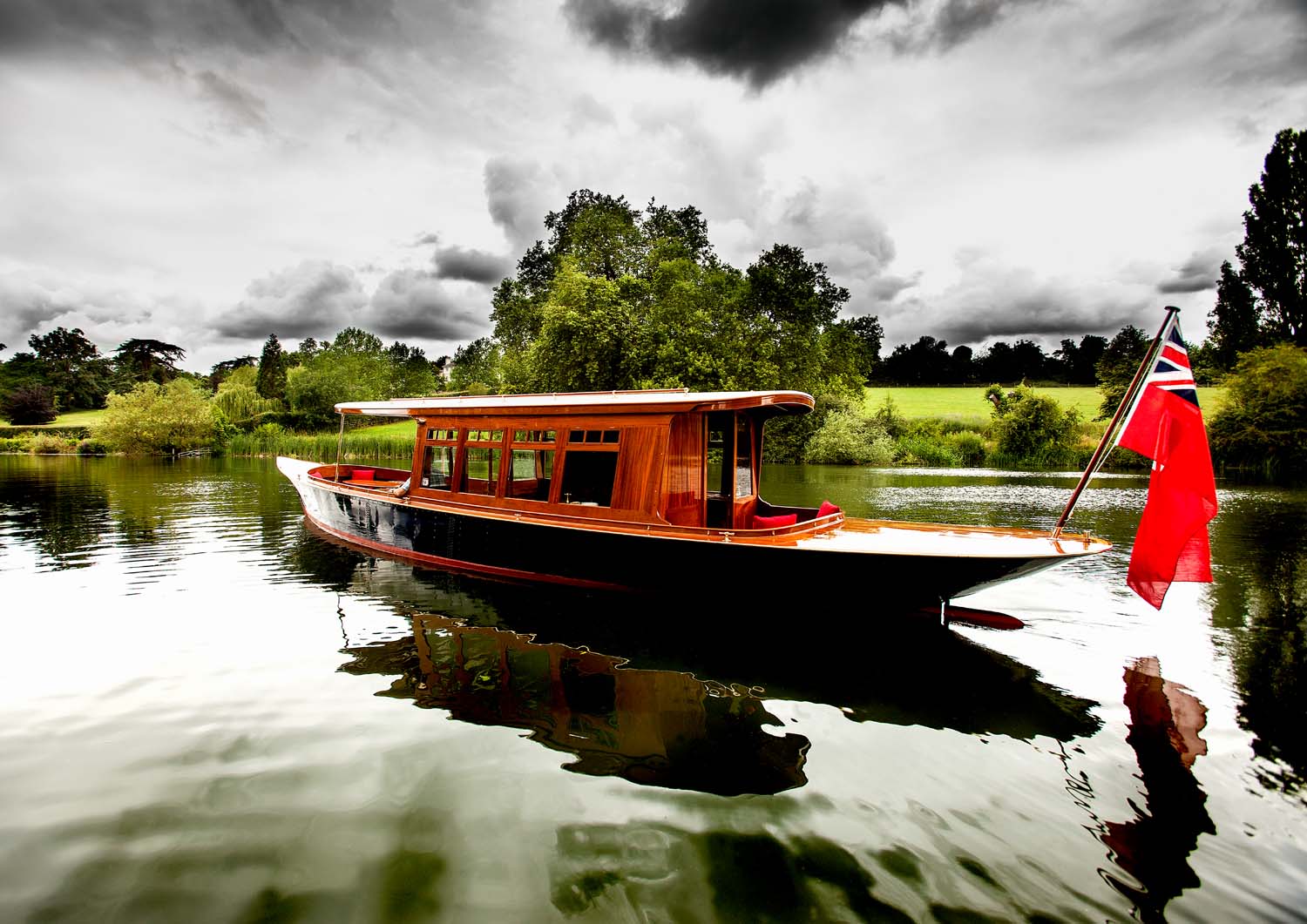
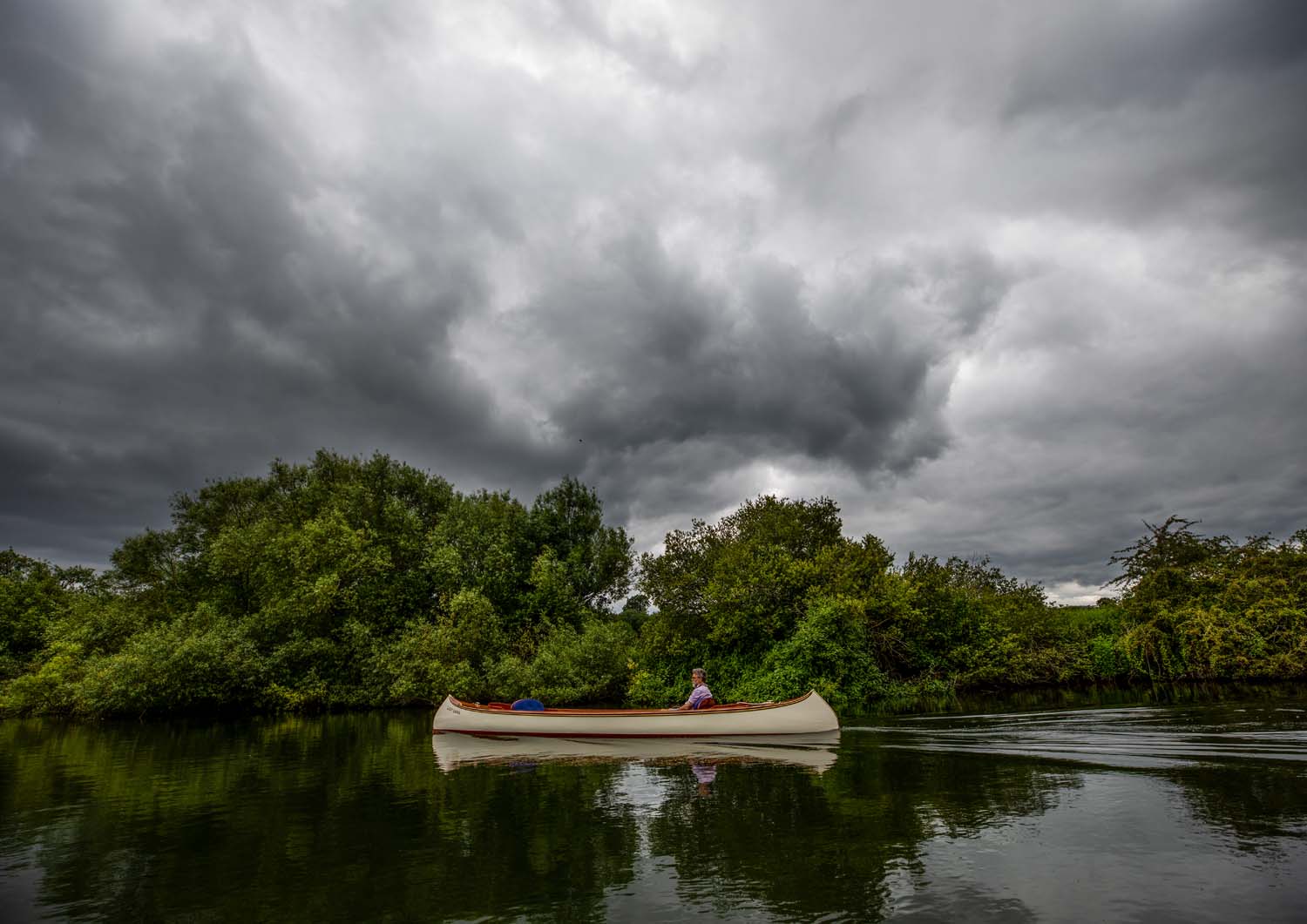
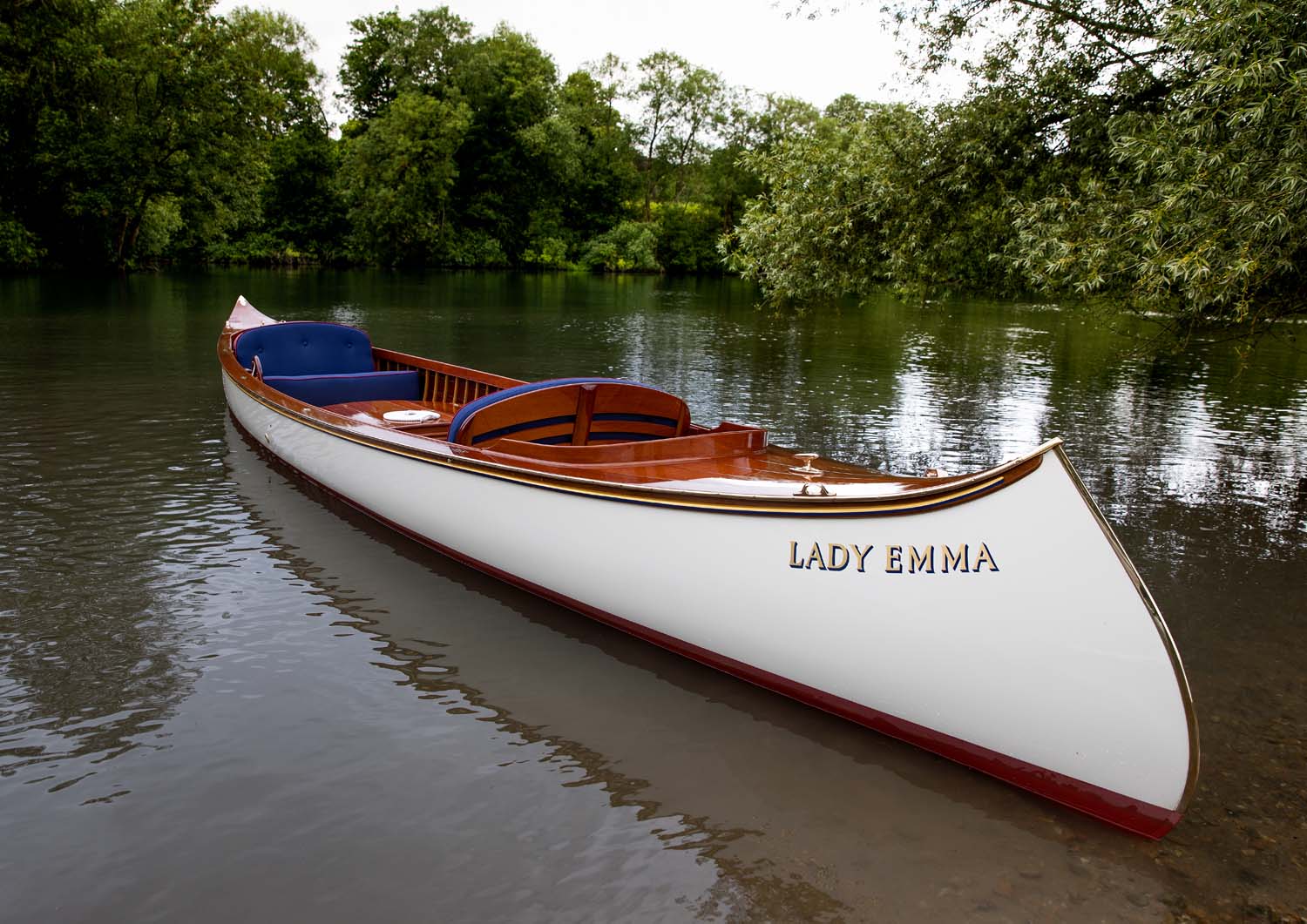
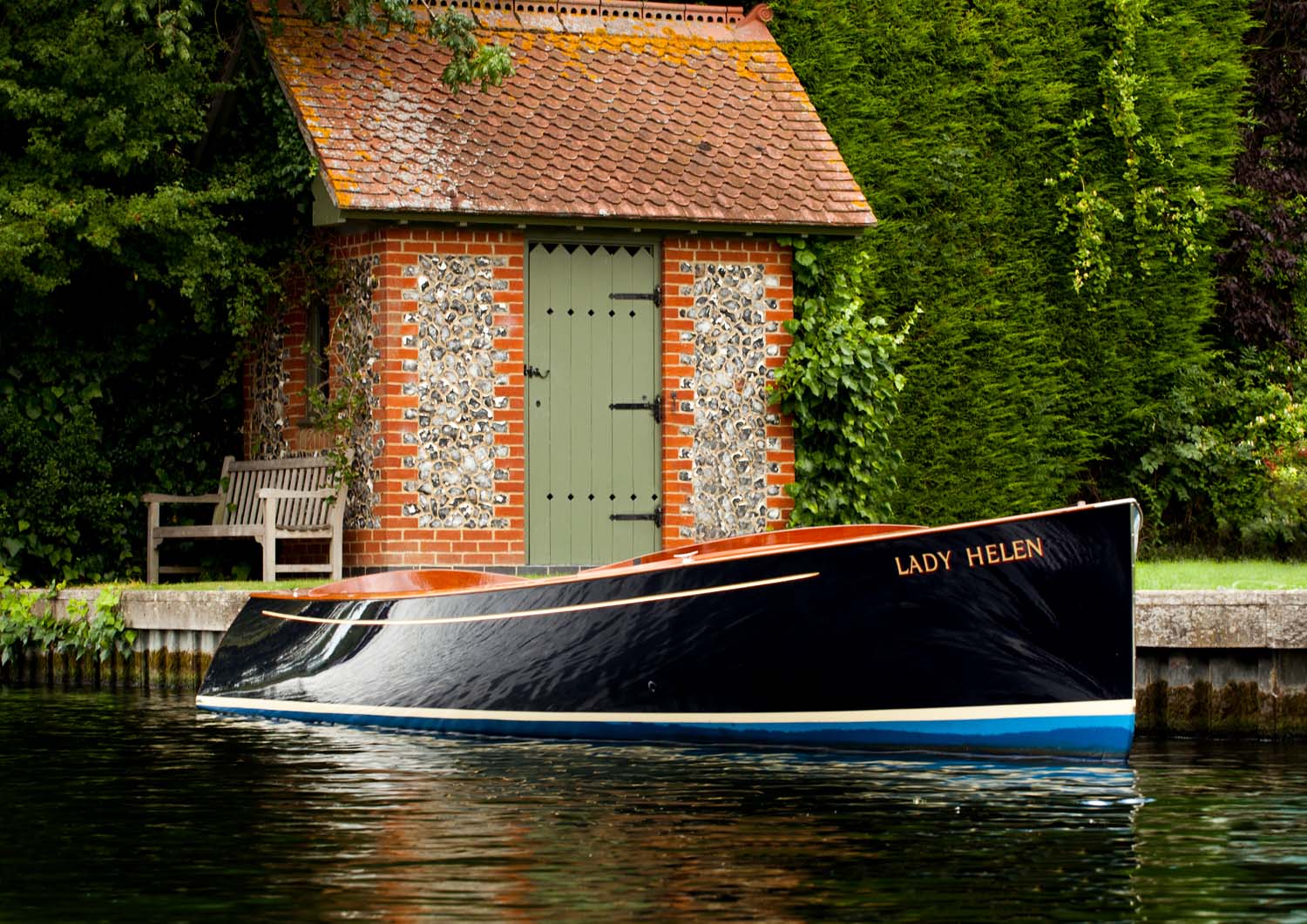
Andrew Wolstenholme and I developed this design with the idea of moving the style of the Thames launch on a bit! While it is simple to replicate existing designs it is sometimes more interesting to move ahead with the genre. The characteristics and purpose of a Thames launch are primarily to provide a very comfortable and sociable experience on the river. The passengers need to feel at ease and be able to enjoy the pleasure of being smoothly transported by a beautiful handmade boat through the wonderful Thames landscape.
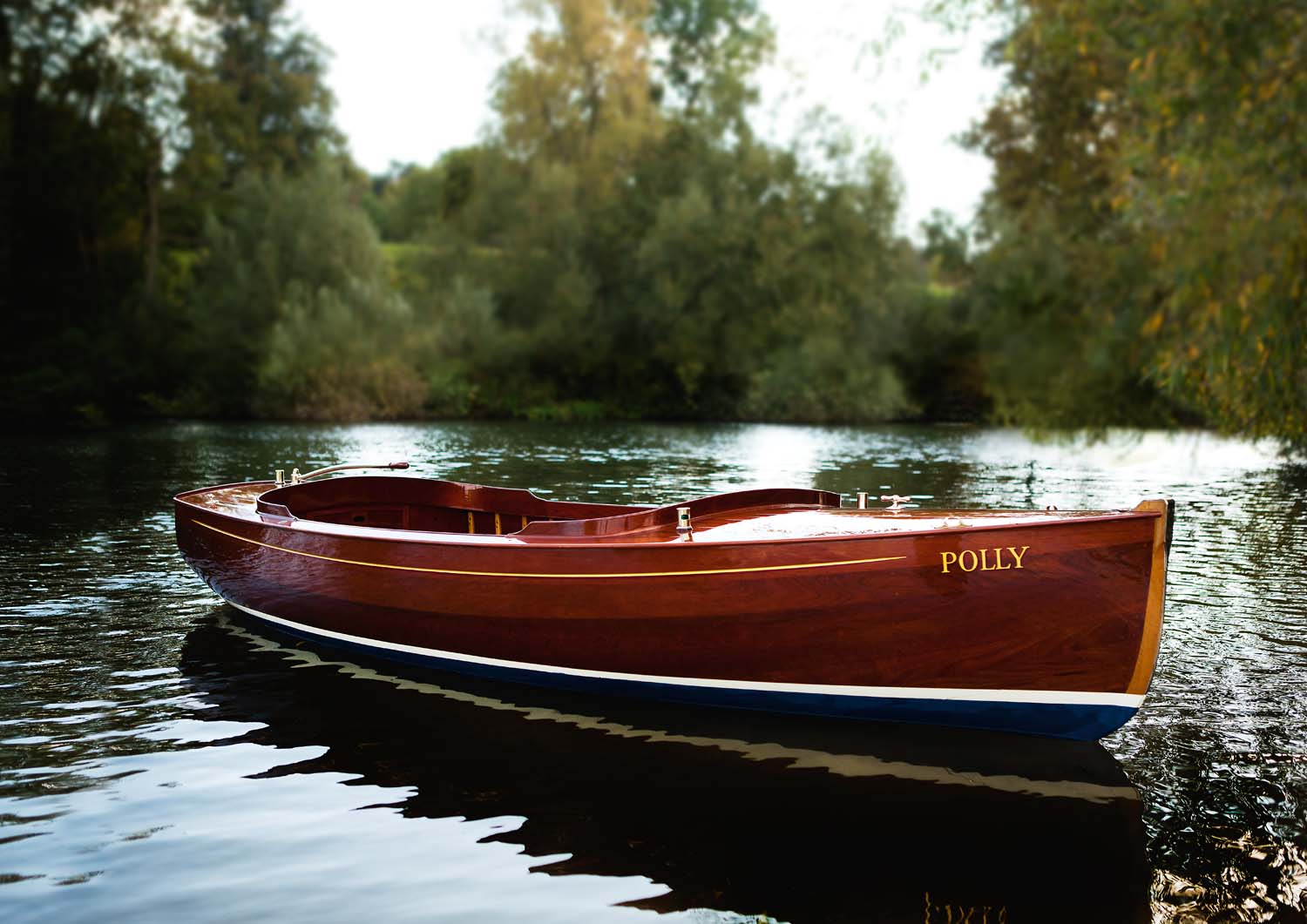
This was a memorable commission - to design and build a little launch to complement a beautiful 18ft sailing boat “Falcon” built by Herbert Woods in about 1920. The new launch was to match “Falcon” in construction, hull shape and materials. The project was made even more pleasurable by the success of the three-way partnership: the client, the designer and the boatbuilder, all working towards producing a beautiful little boat.
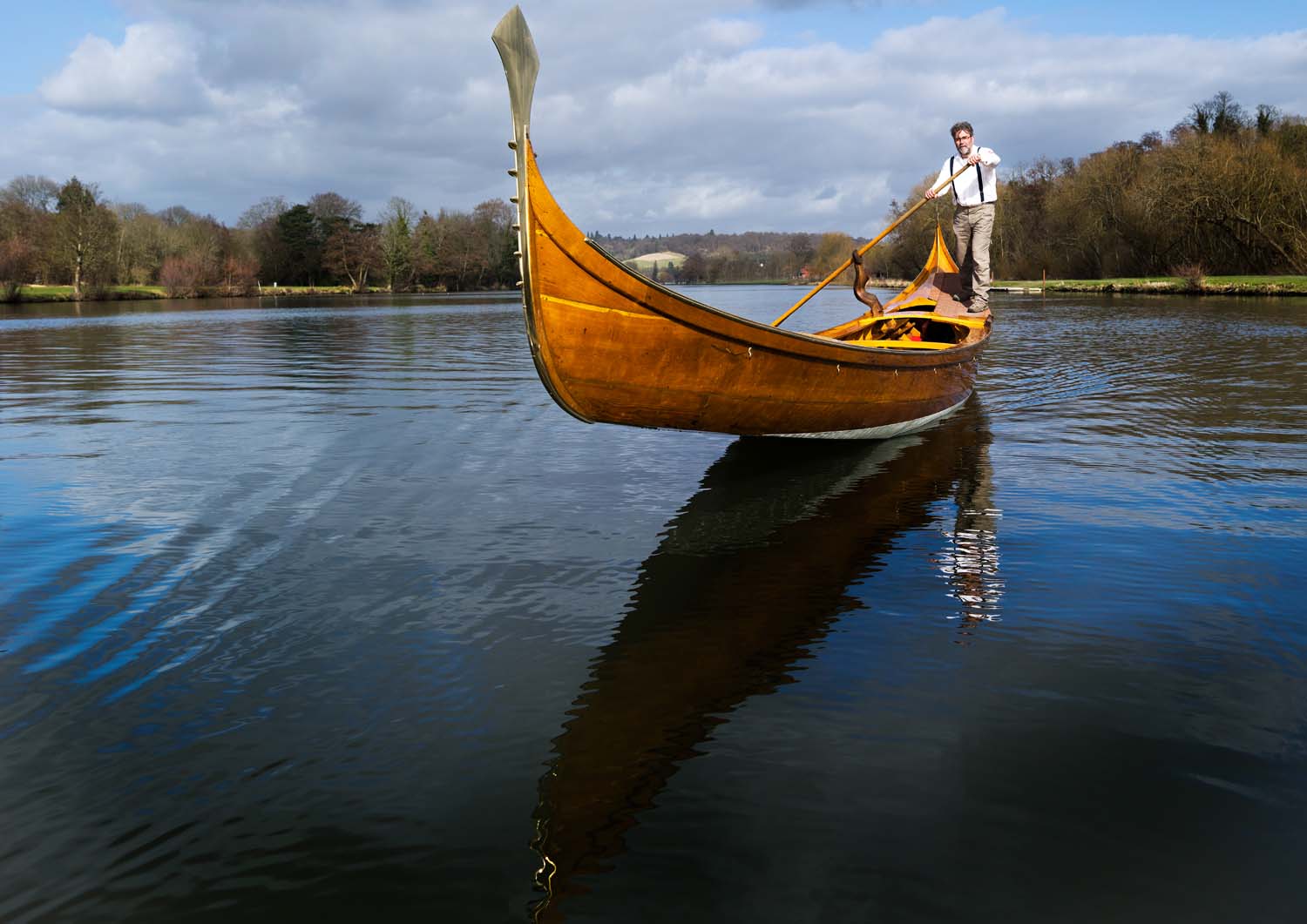
It is a great privilege to have a boat like “Nicolotta” in the boatyard. She was built by the revered Venetian boatbuilder Giovanni Giuponi who was responsible for reviving and developing the extraordinary range of Venetian boats.
Working outside our regular area of experience, the traditional Thames craft, requires caution. It is easy to fall into the idea that because you can build a Thames skiff then you can just as easily build a Venetian boat correctly. Different regional traditions have developed their own peculiar styles with very specific details as well as materials. Miss these subtleties and the boat is plainly wrong.
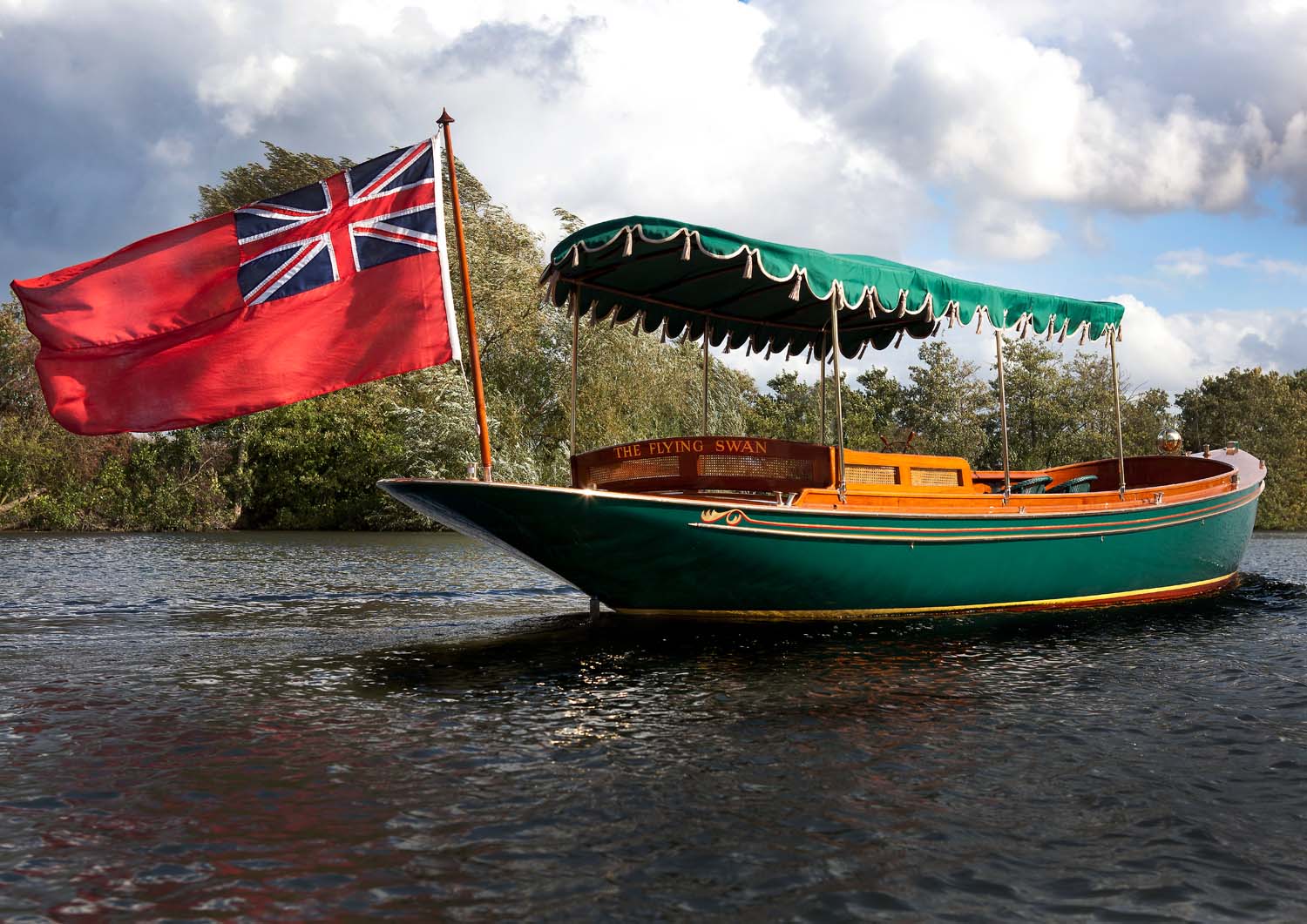
Any wooden boat that has survived 100 years or more has suffered from neglect at some point, and “The Flying Swan” was no exception: she came into the boatyard with her counter stern missing, broken hull framing and no deck or fit-out. Re-building the stern revealed an exquisite elliptical counter that transformed the hull and allowed a beautiful curvy deck with no evidence of the original layout. The aim was to achieve a genuine 1890s’ style whilst hiding a modern electric propulsion system.
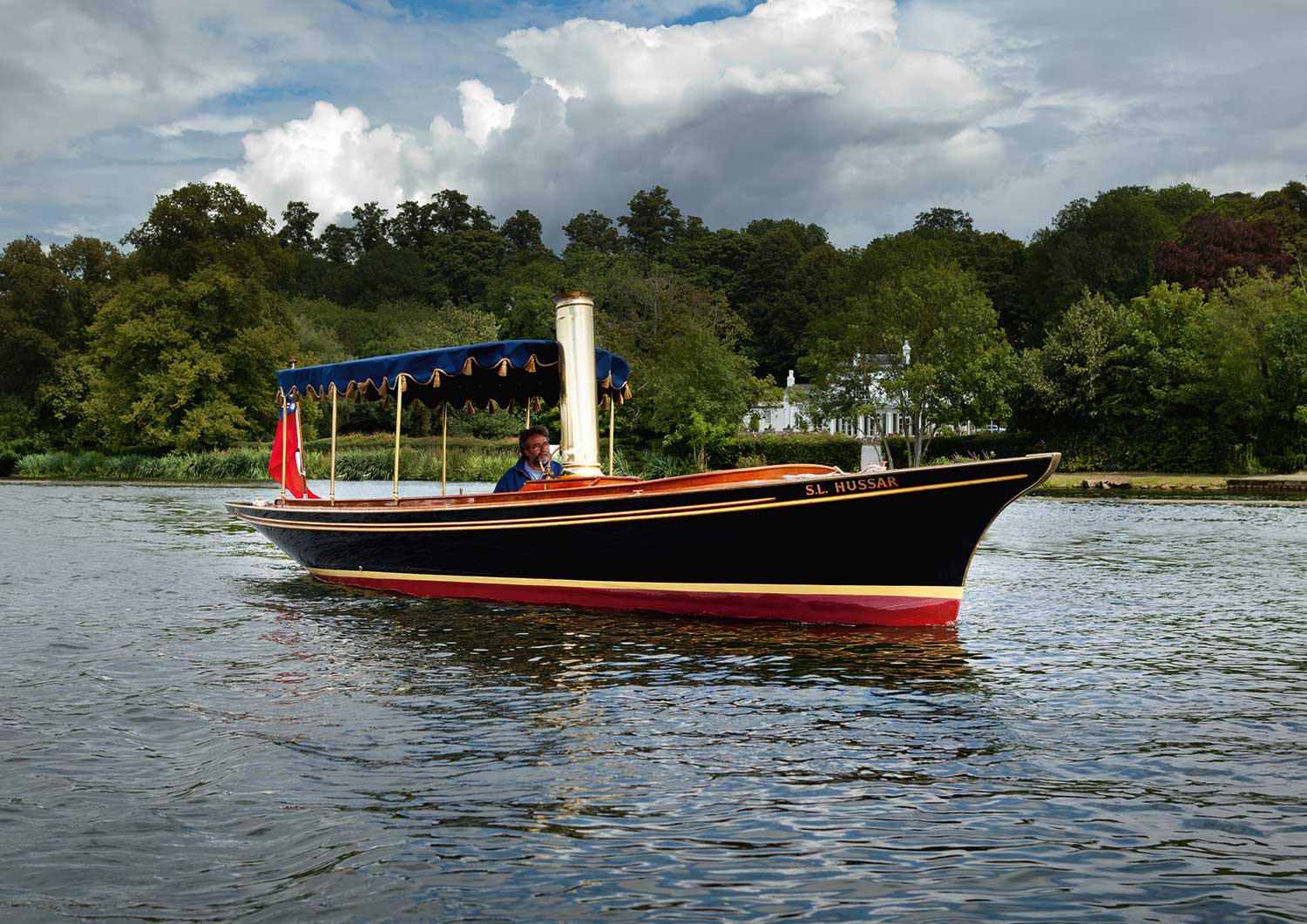
Genuine and original steam launches such as “Hussar” are very rare. Those that have survived into the 21st century are usually planked in Teak, which is almost the perfect boatbuilding timber as it is very beautiful and extraordinarily durable. About the same time as “Hussar” came to the boatyard to be re-built I bought some huge baulks of Teak that had been salvaged from the wreck of a cargo ship torpedoed in the First World War. This beautiful timber was perfect for the project.
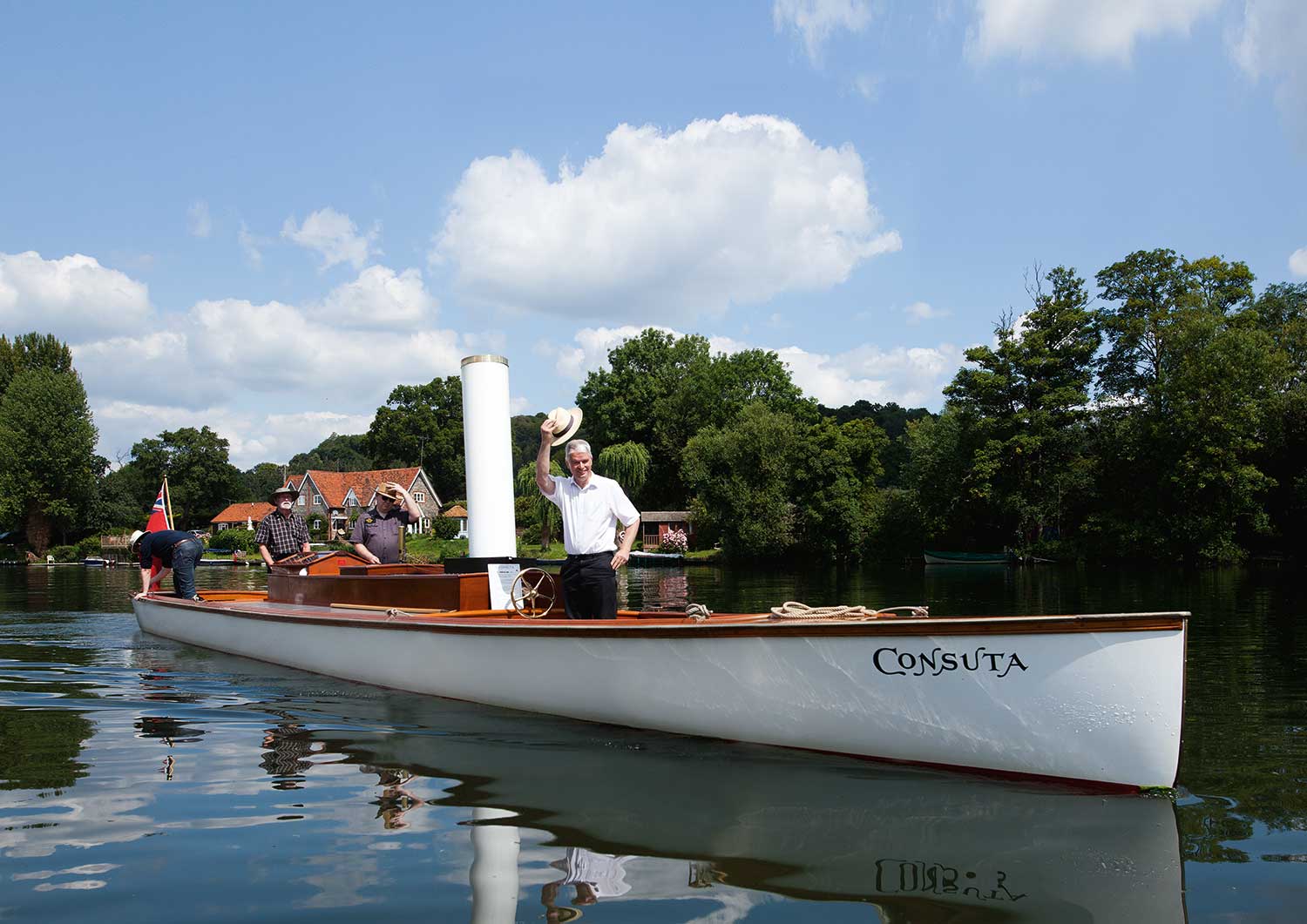
By 1998 when “Consuta” came into our yard, she had undergone a number of various attempts to rebuild the hull, leaving her misshapen and incomplete.
When we took on the project to restore her we started with researching the techniques and construction method that Saunders had developed to build the hull. Working with designer Andrew Wolstenholme we were able to employ the craftsman’s eye and the intelligent use of computer aided design programs to force the hull back to its original form. By studying archive material and contemporary photographs the original layout of the decks and fit-out was also faithfully re-constructed.
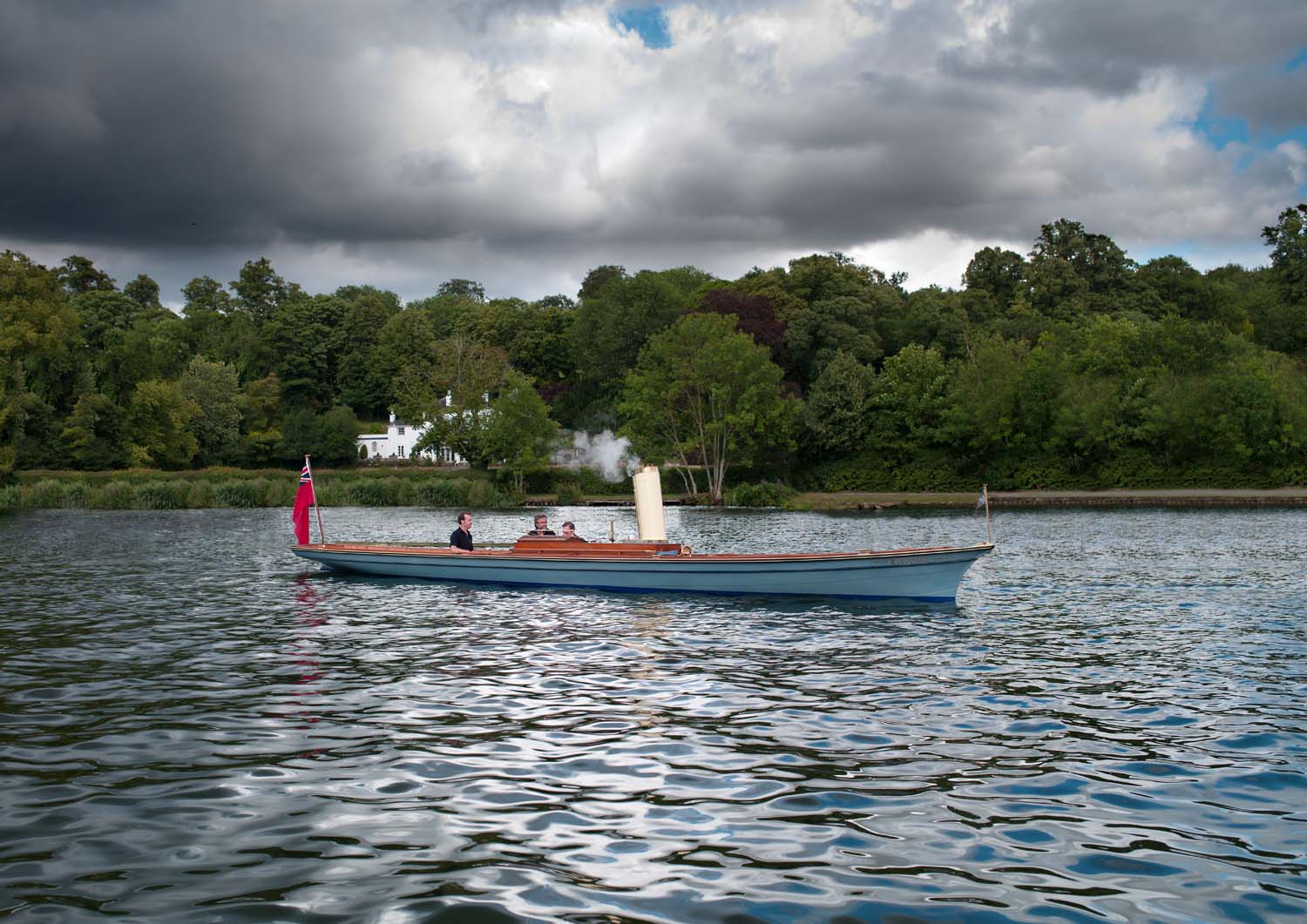
“Pierrette” is from a private museum where she has ‘flagship’ status within a fleet of other Thames boats and ephemera that make up the extraordinary Rose Collection.
My involvement with “Pierrette” was as part of a team led and guided by the owner. Using Des Vignes drawings of a sister launch, together with the owner’s encyclopaedic knowledge and some careful detective work as the boat was dismantled, “Pierrette” was eventually restored to her original 1894 layout.
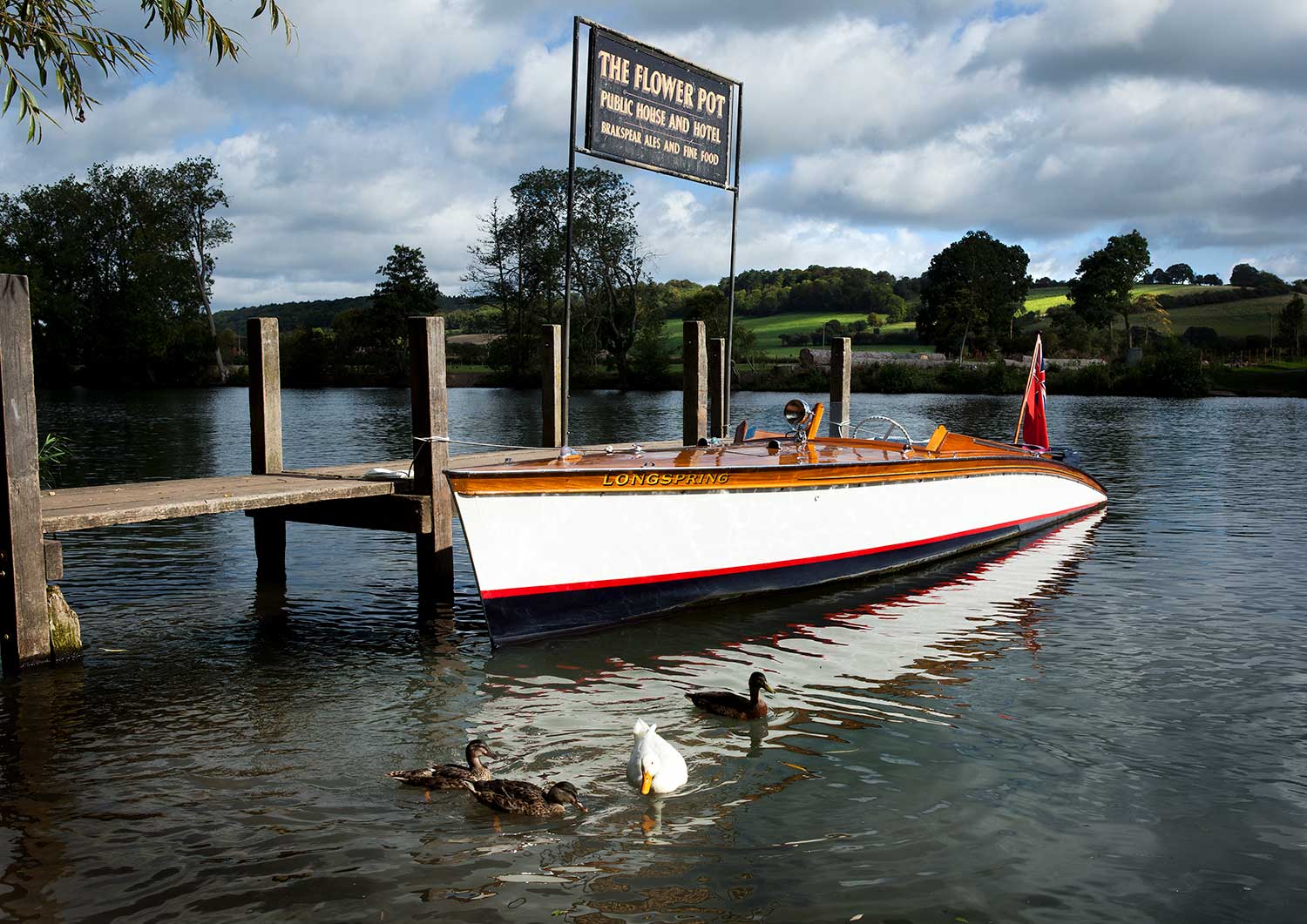
The Slipper Launch is a Thames icon and a remarkable legacy left by Andrews Boathouses whose styling and production methods were influenced by the emerging automotive industry of the time. By the mid-1920s chrome plating had become a well-established technology and was very fashionable in car styling. Andrews gave their range of Slipper Launches car-like attributes and linked this new fashion to the Thames tradition of the elegant launch. Like other boatyards on the Thames the skills used to build these boats were handed down from time-served boatbuilders to their apprentices.
“Longspring” is a very original example of the 30ft variety. She is correct in every aspect, from the deck fittings to her petrol engine.
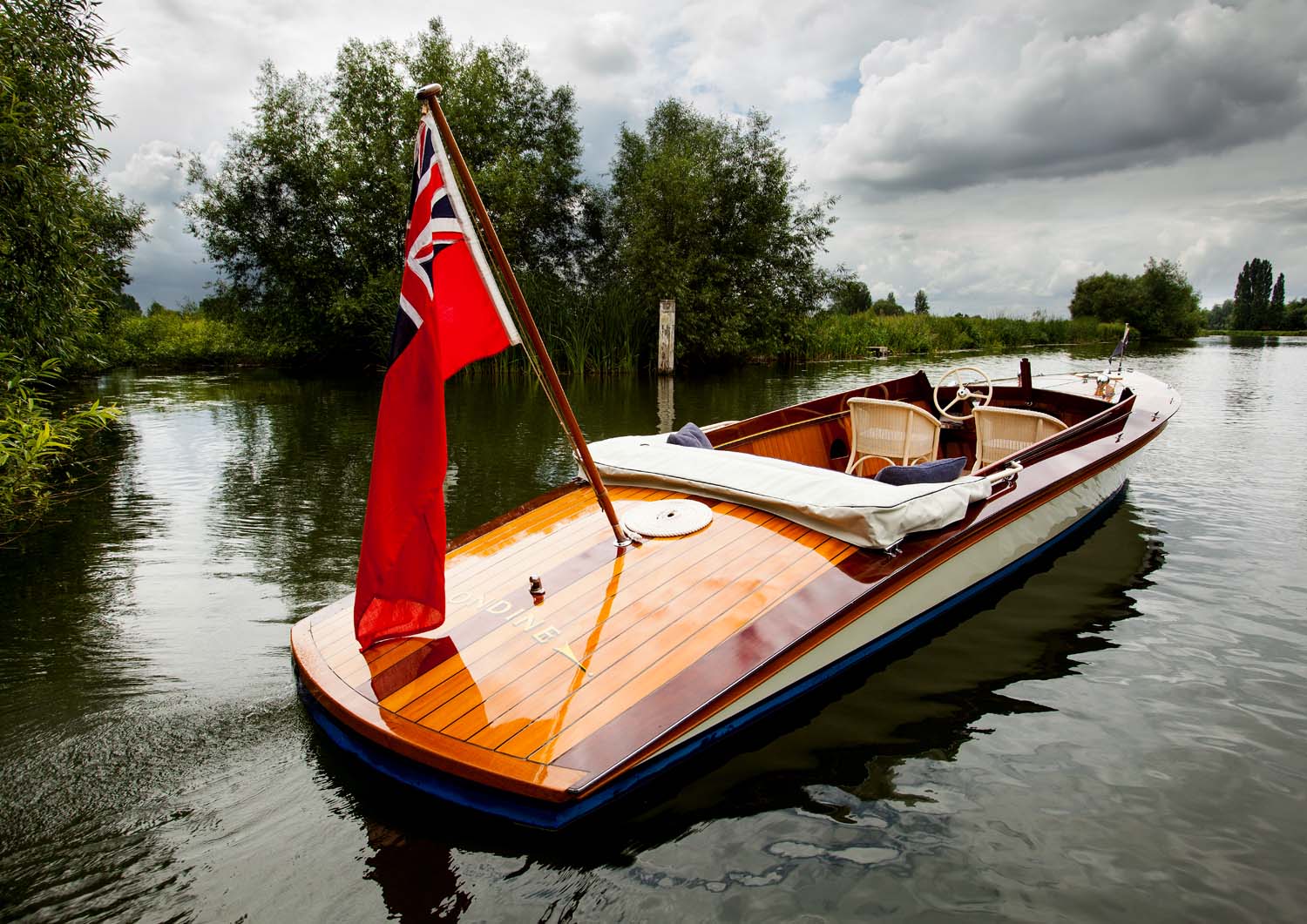
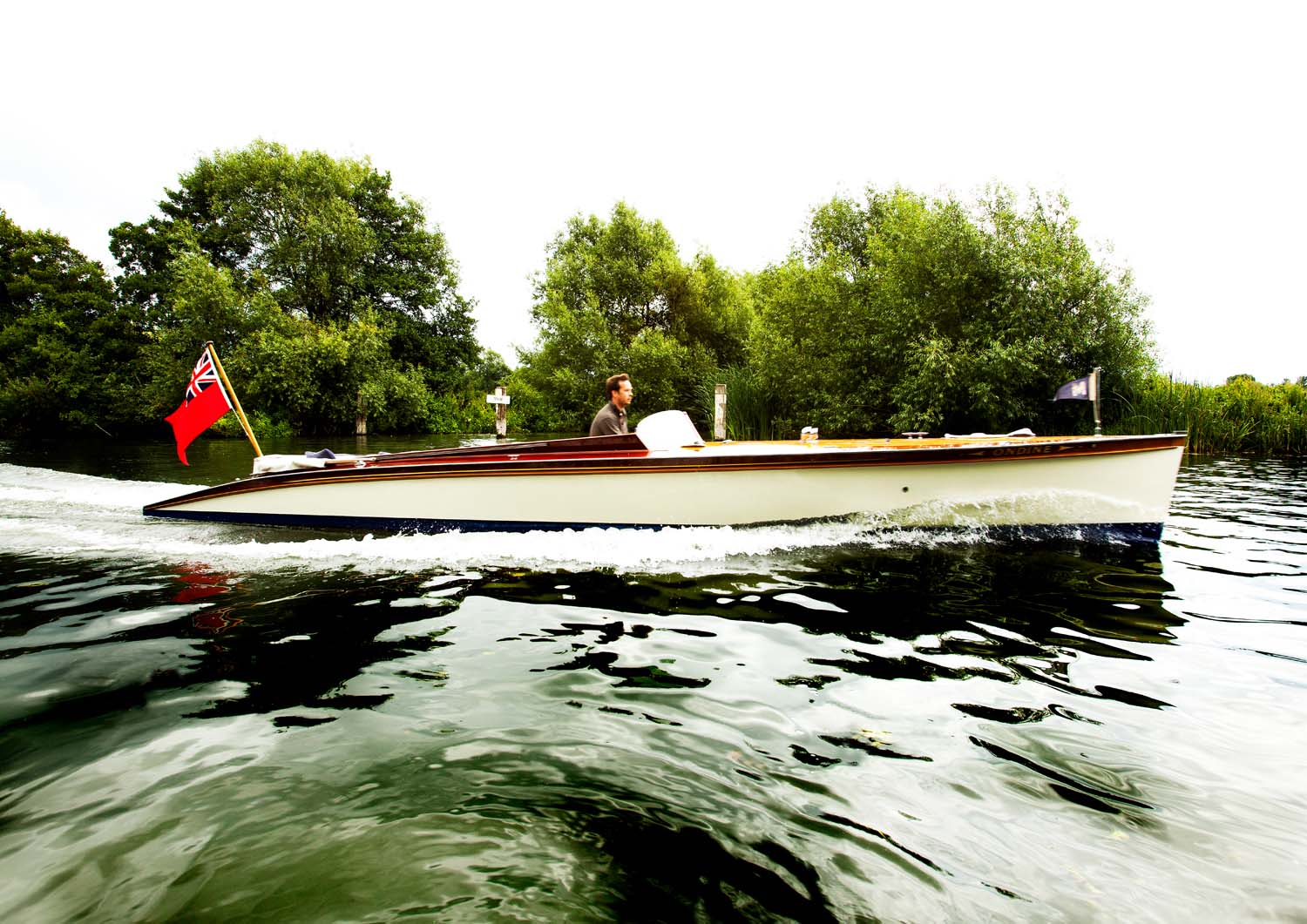
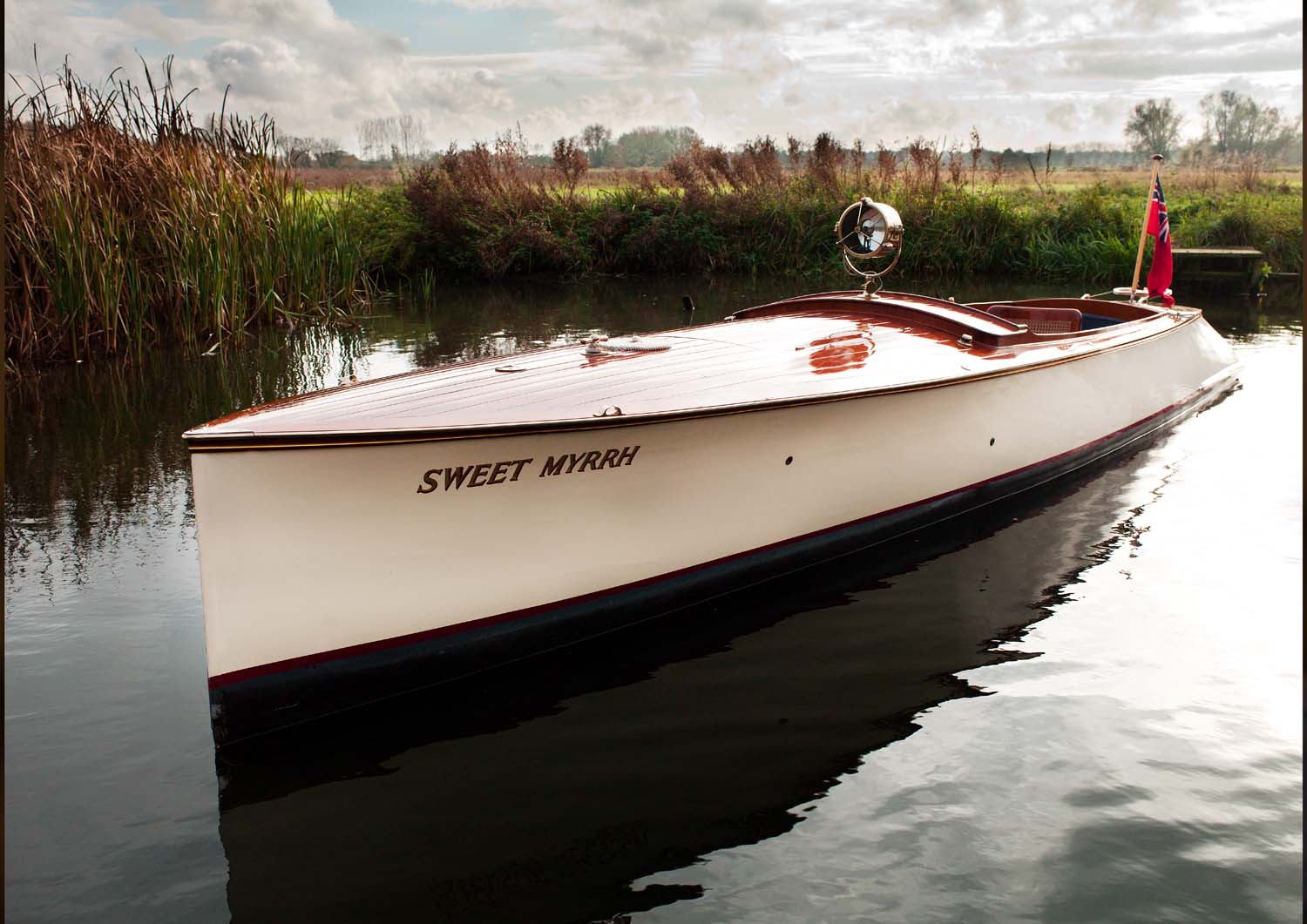
This launch came from a short-lived era of fast displacement launch development pioneered by Sam Saunders. He had invented the Consuta patent construction technique on the Thames but was unable to adequately test fast launches in the shallow tranquil river. This prompted his move to Cowes in 1912 and the start of an extraordinary programme of research and development. “Sweet Myrrh” was built in this early period, which ended when hydroplaning hulls emerged as the next generation of fast boat design.
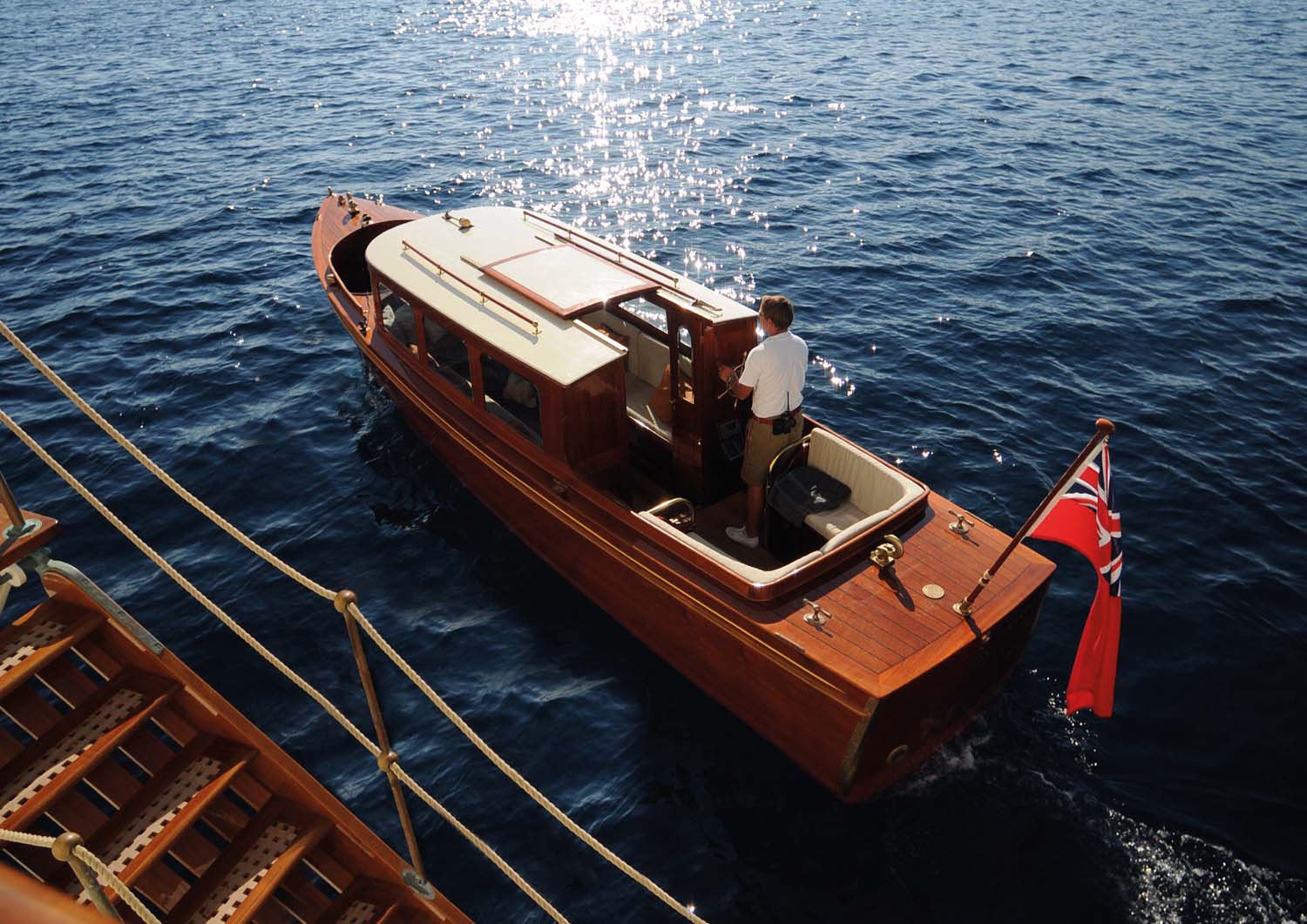
The 300ft steam yacht “Nahlin” was designed by James Rennie Barnett of G.L. Watson & Co and launched on the Clyde in 1930 for Lady Yule. The “Nahlin” is certainly one of the most beautiful of G.L.Watson’s steam yacht designs and her survival and subsequent rebuild is a remarkable story.
The original owner’s launch had not survived but photographic evidence showed a 30ft hull with a cabin or cuddy with a rounded front to protect the guests and an open forward crew cockpit. The brief for the new launch required a good turn of speed and considerable luxury for the guests. Once again my partnership with Andrew Wolstenholme came up with a design that echoed the 1930 launch but provided a fast displacement hull capable of nearly 20 knots.
